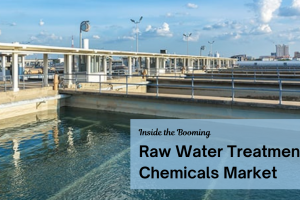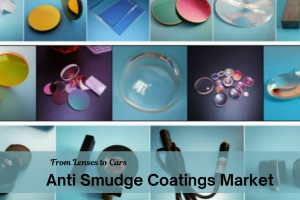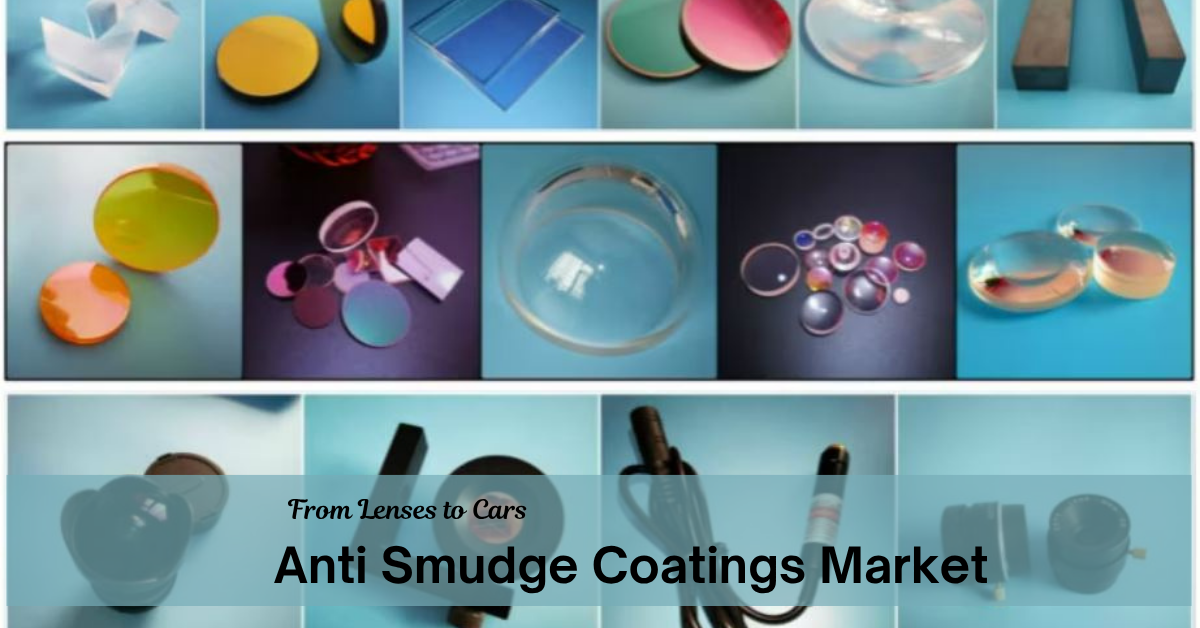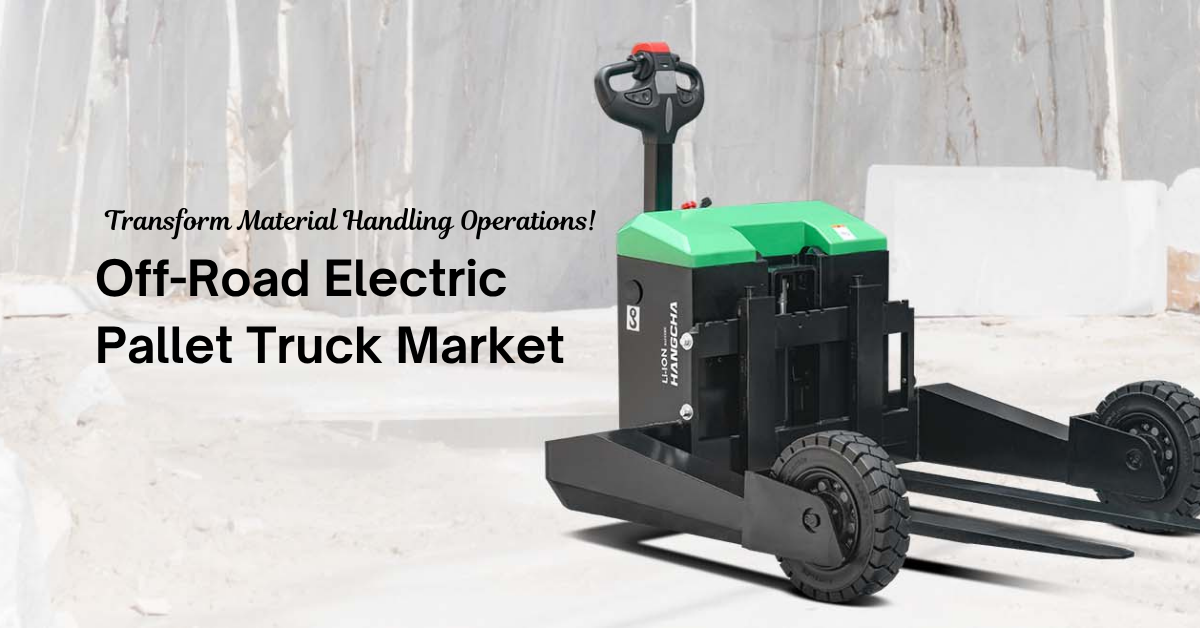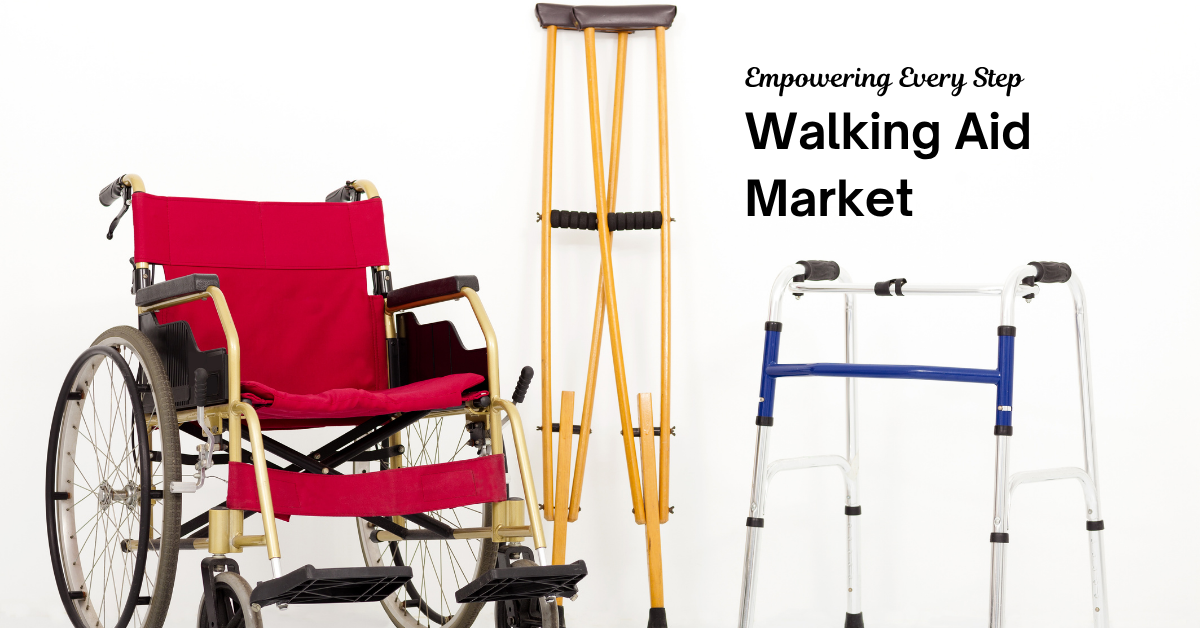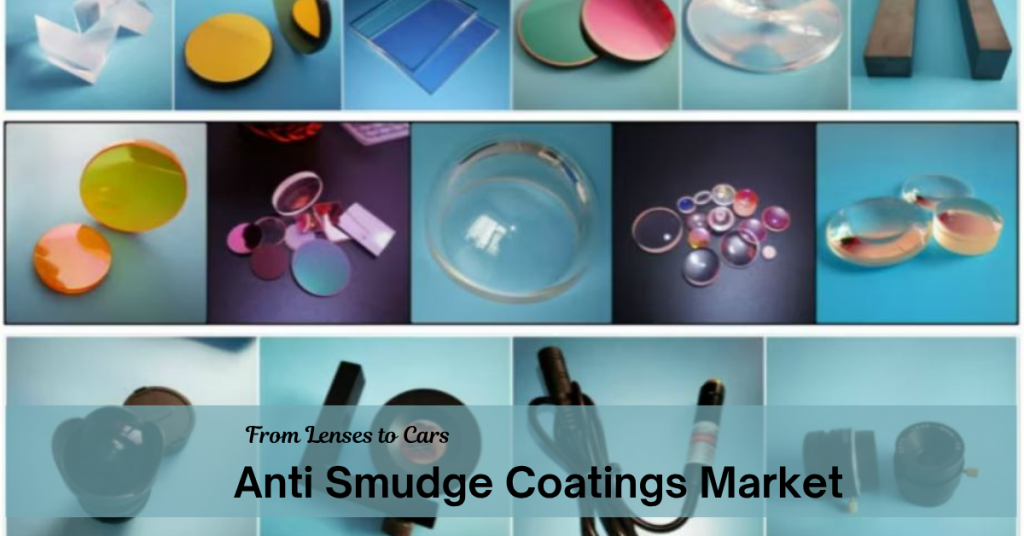
Market Overview
The Anti-Smudge Coatings Market is projected to grow from USD 2,298.98 million in 2024 to USD 3,528.2 million by 2032, reflecting a compound annual growth rate (CAGR) of 5.5%. This growth trajectory highlights the rising preference for products that combine visual clarity with cleanliness. With global consumer behavior leaning towards premium design and hygiene-focused features, industries are actively adopting anti-smudge solutions across multiple applications.
The growing emphasis on touch-enabled surfaces in both personal and professional environments is creating fertile ground for this market. Be it smartphones, infotainment systems, or diagnostic monitors, users expect surfaces that resist smudges, fingerprints, and oils without compromising performance. This expectation has turned anti-smudge coatings from a niche enhancement into a core product specification.
Additionally, the increasing integration of advanced coatings into sustainability agendas is further amplifying their relevance. From energy-efficient formulations to biodegradable compounds, the market is not just innovating for performance but also aligning with global regulatory and environmental goals. As a result, anti-smudge coatings are poised to play a vital role in the future of product design across sectors ranging from automotive and electronics to healthcare and smart infrastructure. Their blend of aesthetic and functional value makes them a key enabler of modern consumer expectations.
Read full report: https://www.credenceresearch.com/report/anti-smudge-coatings-market
Market Drivers
Surging Demand for Touch-Enabled Devices
Touchscreen interfaces are no longer limited to smartphones and tablets—they are now a staple across laptops, ATMs, kiosks, and more. This widespread adoption has intensified the need for anti-smudge coatings that preserve screen clarity and improve user experience. The convenience of gesture-based input depends on responsive and clean displays, driving manufacturers to seek high-performance coatings. Device longevity is also enhanced as smudges can degrade visual components over time. Educational tools and digital workspaces are further accelerating demand. The more consumers rely on screens, the greater the emphasis on maintaining their visual integrity.
Luxury Automotive Trends and User Experience
In high-end automotive interiors, aesthetics and usability go hand in hand. Touch panels, climate control interfaces, and infotainment screens are central to user interaction in modern vehicles. Anti-smudge coatings enhance both appearance and functionality by ensuring a pristine look even with repeated contact. The automotive sector is increasingly focusing on interior cleanliness, especially with shared mobility models on the rise. From dashboard displays to center consoles, smudge-free surfaces elevate brand perception. OEMs are also differentiating their interiors by integrating innovative coatings as part of their design language.
Increased Sanitation Awareness in Medical Settings
Post-pandemic shifts in hygiene protocols have made anti-smudge and antimicrobial coatings indispensable in hospitals and clinics. Medical monitors, diagnostic displays, and surgical tools must remain free from oils and contaminants. Coatings that repel smudges support easier sterilization and compliance with infection control protocols. Healthcare institutions are actively upgrading their infrastructure with protective technologies. Even in outpatient and home healthcare environments, demand for cleanable, resistant surfaces is rising. Touch-enabled medical devices, including wearables and remote diagnostic units, require consistent clarity for effective use.
Material Science Breakthroughs Boosting Adoption
The performance and versatility of anti-smudge coatings have grown with advancements in materials like fluoropolymers and silica-based compounds. These materials now offer improved hydrophobicity, oleophobicity, and mechanical resistance, making them ideal for a variety of surfaces. Coating durability has increased, reducing the need for frequent reapplication. New application methods such as plasma-enhanced deposition and dip-coating are improving scalability. As R&D in material science progresses, the coatings are becoming thinner, clearer, and more adaptable. Industries that once hesitated due to technical limitations are now embracing these upgrades.
Market Challenges
Cost Sensitivity in Emerging Markets
Although performance coatings offer long-term benefits, their upfront costs can be prohibitive for price-conscious regions. In cost-sensitive markets like Southeast Asia and parts of Africa, companies may prioritize affordability over added features like smudge resistance. This disparity in buying power impacts global penetration. Many manufacturers delay product enhancements in these regions. The cost of importing or licensing patented coating technologies can also drive up retail prices. Without localized production or subsidies, adoption may remain limited in lower-income markets.
Environmental Restrictions on Solvent Use
Many conventional coating processes rely on solvents and fluorinated compounds that face growing regulatory scrutiny. Environmental agencies are pushing industries to adopt greener chemistries. As a result, companies must reformulate coatings to eliminate volatile organic compounds (VOCs) and persistent pollutants. These new formulas often involve lengthy approval cycles and added compliance documentation. The transition to water-based or biodegradable options is costly and time-consuming. Until sustainable alternatives match traditional performance, regulatory pressure will pose operational challenges.
Substrate and Coating Mismatch
Anti-smudge formulations that work well on glass may underperform on plastic or polycarbonate surfaces. The lack of universal compatibility remains a pain point for manufacturers working with mixed-material assemblies. Coating adhesion, durability, and visual consistency are not guaranteed across substrates. This leads to increased R&D cycles, pilot testing, and post-application inspections. Each new material combination introduces risk, potentially delaying product launches or increasing defect rates. Custom formulation further adds to development costs and complexity.
Product Lifecycle Management Complexity
As anti-smudge coatings evolve, keeping up with product lifecycle expectations can be difficult. Coatings must maintain performance throughout years of usage and environmental stress. Re-coating or warranty claims add logistical burdens. Manufacturers must constantly monitor field data to assess coating degradation over time. This requires investment in testing equipment and quality assurance protocols. End-of-life recyclability is also becoming a factor, forcing brands to consider eco-disposal of coated materials.
Market Opportunities
Rise in AR/VR and Next-Gen Displays
As augmented reality (AR) and virtual reality (VR) devices gain momentum, the demand for optical clarity in lenses and displays is skyrocketing. Anti-smudge coatings play a crucial role in maintaining immersive experiences. These devices are often worn close to the face, making them more susceptible to smudging. Clear visuals directly influence user satisfaction in gaming, training, and enterprise applications. The opportunity lies in formulating coatings that are ultra-light, distortion-free, and durable for high-friction use. Manufacturers of smart glasses and headsets are already exploring specialized coatings for this purpose.
Commercial and Industrial Touch Interfaces
From restaurant kiosks to industrial control panels, touch interfaces are becoming ubiquitous in commercial settings. These surfaces are touched by dozens of users daily, making anti-smudge and easy-clean properties essential. This opens opportunities in sectors like retail, manufacturing, hospitality, and public infrastructure. The need for durable coatings that can withstand frequent cleaning and harsh chemicals is growing. Companies offering hybrid coatings with both smudge-resistance and chemical resilience can gain a competitive edge. The retrofit market for upgrading existing screens also adds a secondary revenue stream.
Eco-Conscious Consumer Segments
As consumers become more environmentally aware, demand is rising for coatings with low environmental impact. Brands that market eco-friendly coatings with reduced toxicity, energy usage, and carbon footprint are seeing increased attention. Formulations using renewable resources or plant-derived materials are entering the premium segment. Transparency in sourcing and biodegradability are becoming selling points, particularly in personal electronics and packaging. Companies with sustainability certifications can access green procurement contracts and win favor with regulatory bodies.
Collaborative Innovation in Coatings and Device Design
Device makers and coating providers are now collaborating at earlier stages of product development. This trend is creating more integrated solutions, where surface design complements coating functionality. These partnerships help optimize both aesthetics and performance while reducing production inefficiencies. Joint R&D programs between material scientists and product designers are generating novel features like fingerprint-repellant textures and anti-static surfaces. Cross-sector collaboration also accelerates the entry of coatings into new verticals like aviation or marine electronics.
Market Segmentation
Based on Type:
- Hydrophobic Coatings
- Oleophobic Coatings
- Others
Based on Application
- Consumer Electronics
- Automotive
- Medical Devices
- Optical
- Others
Based on End-User
- Electronics
- Automotive
- Healthcare
- Others
Based on Geography:
North America
- U.S.
- Canada
- Mexico
Europe
- UK
- France
- Germany
- Italy
- Spain
- Russia
- Belgium
- Netherlands
- Austria
- Sweden
- Poland
- Denmark
- Switzerland
- Rest of Europe
Asia Pacific
- China
- Japan
- South Korea
- India
- Australia
- Thailand
- Indonesia
- Vietnam
- Malaysia
- Philippines
- Taiwan
- Rest of Asia Pacific
Latin America
- Brazil
- Argentina
- Peru
- Chile
- Colombia
- Rest of Latin America
Middle East & Africa
- GCC Countries
- South Africa
- Rest of the Middle East and Africa
Regional Analysis
North America
The U.S. and Canada lead the North American market due to strong adoption of advanced consumer electronics and connected car technologies. A mature healthcare infrastructure and preference for premium aesthetics fuel demand for high-grade coatings. Tech giants and OEMs headquartered in the region are partnering with material science firms to enhance device quality. Regulatory support for clean technology further encourages eco-friendly formulations. The presence of key players and innovation hubs gives this region a competitive edge.
Europe
Europe shows consistent demand across automotive, medical, and consumer sectors. Countries like Germany and Sweden emphasize industrial design excellence, integrating anti-smudge coatings into high-touch products. The EU’s green policy framework is pushing manufacturers toward sustainable coatings. Rising EV adoption is expanding the use of infotainment panels that require cleanable surfaces. France and the Netherlands are also investing in public transport systems with touchscreen ticketing and navigation—new frontiers for coating applications.
Asia Pacific
Asia Pacific dominates manufacturing and is a hotbed for innovation in display technologies. Nations like South Korea and Japan are global leaders in electronics and are actively integrating anti-smudge coatings into their supply chains. China’s massive production scale allows for cost-efficient implementation across a wide range of devices. India’s startup ecosystem is beginning to embrace advanced coatings, particularly in medical diagnostics and wearables. Regional demand is driven by both volume and technological novelty.
Latin America
While still developing, Latin America presents growth potential, particularly in Mexico and Brazil. Rising smartphone penetration and growing investments in smart infrastructure create a steady base for coating adoption. Electronics retailers are promoting premium display features to affluent consumers. Automotive production for domestic and export markets is also contributing to demand. Healthcare reforms in urban regions add momentum to medical-grade coating uptake.
Middle East & Africa
In the Middle East, UAE and Saudi Arabia are advancing smart city and digital health initiatives that require robust, cleanable display surfaces. Luxury consumer preferences also support high-end product features like anti-smudge technology. In Africa, growth is driven by the expansion of public health infrastructure and mobile technology usage. Investments in retail modernization and smart banking are introducing more touchscreen interactions, creating space for anti-smudge adoption.
Top Companies
- Jotun Group
- 3M Company
- Hempel A/S
- BASF SE
- Sherwin-Williams Company
- The Dow Chemical Company
- RPM International Inc.
- PPG Industries, Inc.
- DuPont de Nemours, Inc.
- Akzo Nobel N.V.
Future Outlook
- Demand will accelerate across smart devices as gesture and touch control become more sophisticated.
- Hybrid coatings that combine anti-smudge, anti-glare, and antimicrobial features will dominate.
- Coating adoption will rise in the public infrastructure space, including ticketing and transit systems.
- Green chemistry will become central to R&D as ESG compliance tightens across industries.
- Automotive interiors will emerge as a top revenue stream due to the rise in luxury and EV models.
- Smart mirrors and touch-enabled home appliances will introduce coatings to mass households.
- Strategic alliances between OEMs and coating firms will lead to vertically integrated solutions.
- Asia Pacific will continue to drive global supply and innovation pipelines, influencing pricing and trends.
- Digital healthcare advancements will fuel growth in diagnostic screens and portable equipment.
- AI-driven formulation platforms will streamline product development and shorten market entry cycles.
Read full report: https://www.credenceresearch.com/report/anti-smudge-coatings-market


